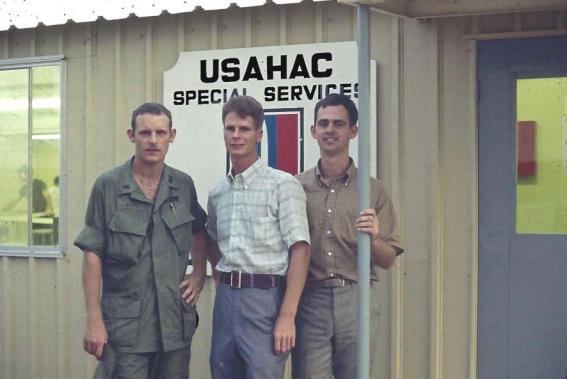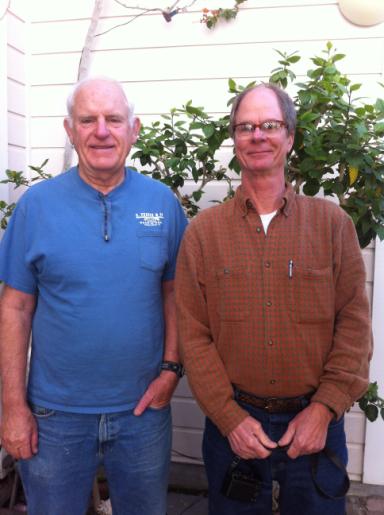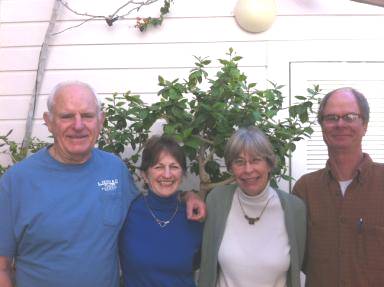| E-Mail Forum | |
|
|
|
| Old Soldiers Never Die... April 1, 2012 |
|
|
Until yesterday, I had not seen Eric Nelson for 43 years, not since we served in Vietnam in 1969. Eric and his wife, Dottie, stayed over with us last night as part of a two -week road trip through California they were finishing up in the Bay Area. Eric is an artist, recently retired as professor of art at Middlebury College in Vermont. Being smarter than it looks, the U.S. Army actually assigned Eric to something he was good at. As an artist, he became an illustrator for psychological warfare (PSYOPS) media prepared in Saigon, flown to New York for printing, flown back to Vietnam, and finally dropped by planes and helicopters over areas where someone figured regretful Viet Cong would be persuaded to change their allegiance. Untold billions of those pamphlets and flyers were distributed during those war years. No one knows whether it did any good, or not. But for Eric, it was good duty. The photo below from 1969 shows (from left to right), me, Eric Nelson and Allen Tolbert, all of us reluctant but dutiful soldiers. Because of their special assignments, Eric and Allen didn’t have to wear uniforms all the time like I did. I was in the Corps of Engineers, building infrastructure. Allen, a city planner by education, had landed an assignment advising the City of Saigon on planning. We shared the cost of an apartment that Allen actually lived in and Eric and I visited when we could. Saigon was a lively and exciting place in those days.
The second photo taken today shows Eric and me today, with much less hair and more bulk but still with that unmistakable military bearing.
The third photo includes our wives, Dottie and Shirley.
One of the best stories I remember about Eric, who was a bit of a rogue, was his unauthorized visit to the “Coconut Monk,” a holy man based on an island (Con Phung) in the Mekong River between Ben Tre and My Tho. Ong Dao Dua, the monk, meditated on the island for three years during which time he ate nothing but coconuts. He headed his own sect, which was a bizarre mix of Christianity and Buddhism. About two weeks before his discharge, Eric asked his commanding officer for permission to make a trip to Con Phung. Because it was considered unsecure and dangerous, permission was denied. Eric went anyway, and when he returned, he was busted to the lowest possible rank before leaving for home and leaving the Army, with a dubious reputation but with an honorable discharge. Eric said the monk had two telephones flanking his seat, one white and the other black. When Eric asked what they were for, the monk responded, “ One is a direct line to Ho Chi Minh, and the other a direct line to Richard Nixon.” He said he was in the process of brokering a peace agreement. Eric went on to become a respectable citizen, artist and academic. Recent exhibitions of his sculpture have been installed in public sculpture parks at James Madison University in Harrisonburg, Virginia; Navy Pier in Chicago; and the DeCordova Museum and Sculpture Park in Lincoln, Massachusetts. Nelson has been a visiting artist at the Edinburgh College of Art in Edinburgh, Scotland; the School of the Museum of Fine Arts in Boston; Trinity College in Hartford, Connecticut; and the Vermont Studio Center in Johnson, Vermont. He has been awarded residency fellowships at Moulin a Nef in Auvillar, France; the Virginia Center for the Creative Arts in Sweet Briar, Virginia; and Sculpture Space, Inc., in Utica, New York. He has received two fellowships from the Vermont Council on the Arts and the Albert Jacobson Memorial Award at the Silvermine Guild Arts Center in New Canaan, Connecticut.
|
|
|
|


